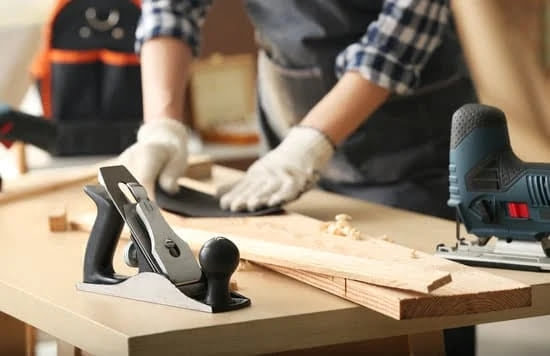A woodworking glue up rack is a vital tool that can significantly improve efficiency and accuracy in woodworking projects. Whether you are a beginner or an experienced woodworker, having a proper glue up rack is essential for successful woodworking. This article will delve into the importance of investing in a high-quality woodworking glue up rack and how it can enhance your woodworking projects.
In order to achieve the best results in woodworking, it is crucial to have a solid foundation for joining pieces together. A woodworking glue up rack provides just that – a stable surface that allows you to clamp your workpieces securely during the gluing process. This ensures that your project stays aligned and prevents any warping or shifting of the pieces while the glue dries.
Understanding the basics of what a woodworking glue up rack is and how it differs from other types of racks or clamps used in woodworking is important for choosing the right one for your needs. This article will guide you through the features to look for when selecting a glue up rack, such as adjustable height, sturdy construction, and sufficient clamping capacity.
By investing in a high-quality woodworking glue up rack and following the tips and techniques shared in this article, you can maximize efficiency in your projects. From efficient clamping techniques to optimizing workflow and space, this article will provide you with invaluable insights on how to utilize your glue up rack effectively. So let’s delve deeper into understanding why having a proper woodworking glue up rack is essential for enhancing efficiency and accuracy in all your woodworking endeavors.
Understanding the Basics
A woodworking glue up rack is a fundamental tool in any woodworker’s workshop. It is designed specifically for the process of gluing multiple pieces of wood together to create larger and more complex assemblies, such as tabletops, cabinet panels, or segmented turnings. This section will delve into the basics of what a woodworking glue up rack is, its purpose, and how it differs from other types of racks or clamps used in woodworking.
What is a Woodworking Glue Up Rack?
A woodworking glue up rack, also known as an assembly rack or glue-up table, is a specialized work surface that provides a flat and level area for assembling and clamping together pieces of wood during the gluing process. It typically consists of three main components: the frame, the top surface, and the clamping system.
The frame provides overall stability and support, while the top surface offers a smooth and even platform for aligning and arranging the wooden pieces to be glued. The clamping system allows for secure attachment and pressure distribution to ensure proper bonding between the individual parts.
Purpose and Advantages
The primary purpose of a woodworking glue up rack is to facilitate efficient and accurate glue-ups by providing stability, alignment control, and ample clamping capacity. Unlike other types of racks or clamps used in woodworking, such as traditional workbenches or bar clamps, a dedicated glue up rack offers several advantages:
- Increased Stability: A well-designed glue up rack eliminates wobbling or movement during the gluing process. This stability ensures that each piece of wood remains precisely positioned before the adhesive sets.
- Enhanced Alignment Control: The flat top surface of a glue up rack enables precise alignment when assembling different pieces of wood. It allows for uniform pressure distribution across joints, resulting in stronger connections.
- Sufficient Clamping Capacity: Glue up racks are designed to accommodate multiple clamps simultaneously. This feature allows woodworkers to glue up larger, more complex projects that may require numerous clamps for a secure bond.
- Time and Labor Savings: With a dedicated glue up rack, woodworkers can efficiently glue up multiple pieces at once, eliminating the need for individual clamping on various surfaces. This saves time and effort during the gluing process.
Understanding the basics of a woodworking glue up rack and its advantages over other types of racks or clamps is crucial for woodworkers looking to optimize their glue-ups. In the following sections, we will explore essential features to consider when choosing a glue up rack and discuss practical tips on setting it up and maximizing its efficiency in woodworking projects.
Essential Features
When selecting a woodworking glue up rack, there are several essential features to consider in order to ensure efficiency and accuracy in your woodworking projects. The following key features should be taken into account when choosing a woodworking glue up rack:
- Adjustable Height: One important feature to look for in a woodworking glue up rack is adjustable height. This allows you to customize the rack to fit the specific needs of your projects. Adjustable height ensures that you can work comfortably at different levels, whether you’re working on small scale projects or larger ones. It also helps with accessibility and ergonomics, reducing strain on your back and joints.
- Sturdy Construction: Another crucial feature of a good woodworking glue up rack is sturdy construction. The rack should be made from durable materials that can withstand the pressure and weight of clamped pieces without bending or flexing. Look for racks that are made from solid wood or sturdy metal components to ensure long-lasting durability.
- Sufficient Clamping Capacity: The clamping capacity of the woodworking glue up rack is also an important consideration. You want a rack that can handle different sizes and shapes of projects, so it’s crucial to choose one that has sufficient clamping capacity. Look for racks with multiple clamps or clamp rails that allow for versatile positioning and securing of workpieces during glue ups.
By paying attention to these essential features, you can find a woodworking glue up rack that meets your specific needs and enhances the efficiency and accuracy of your projects. Whether you’re working on small furniture pieces or large-scale constructions, having a well-designed glue up rack with adjustable height, sturdy construction, and sufficient clamping capacity will greatly improve your workflow and ensure successful glue ups every time.
Here is an unordered list summarizing the key features to look for in a woodworking glue up rack:
- Adjustable height.
- Sturdy construction.
- Sufficient clamping capacity.
DIY vs. Store-bought Racks
When it comes to choosing a woodworking glue up rack, one of the primary decisions you’ll need to make is whether to build your own or purchase a pre-made one. Both options have their advantages and disadvantages, so it’s important to consider your specific needs and preferences before making a decision.
Building Your Own Woodworking Glue Up Rack
Building your own woodworking glue up rack can offer several benefits. Firstly, it allows for greater customization. By constructing your own rack, you have the freedom to design it according to your specific requirements and preferences. You can choose the dimensions, materials, and features that will best accommodate your woodworking projects. This level of customization can be particularly advantageous if you frequently work on unique or specialized projects.
Another advantage of building your own rack is cost savings. While the initial investment may include purchasing materials and tools, building your own rack typically proves to be more economical in the long run compared to buying a pre-made one. Additionally, building your own rack can be a fulfilling DIY project that allows you to develop new skills and gain a deeper understanding of woodworking techniques.
However, there are some downsides to consider when building your own woodworking glue up rack. It requires time, effort, and a certain level of skill. If you’re not experienced in woodworking or don’t have access to necessary tools, constructing a sturdy and functional rack may pose challenges. Additionally, building your own rack may result in trial-and-error as you fine-tune its design and functionality.
Purchasing a Pre-Made Woodworking Glue Up Rack
On the other hand, buying a pre-made woodworking glue up rack offers its own set of advantages. One major benefit is convenience – with a pre-made rack, you can start using it right away without having to spend time on construction. This can be especially appealing for those who prioritize efficiency or lack the necessary skills or tools for building their own rack.
Pre-made racks are also generally designed and manufactured with high-quality materials and construction. They often come with features that have been tested and proven to facilitate efficient glue ups, such as adjustable height, sturdy clamping mechanisms, and ample working space. Investing in a professional-grade rack can provide peace of mind knowing that you’re using a reliable and durable tool.
However, the cost of purchasing a pre-made rack is typically higher than building your own. This upfront expense may be prohibitive for some woodworkers, especially those on a tight budget or who prefer to allocate funds towards other tools or materials. Additionally, store-bought racks may lack the level of customization available when building your own, which could be limiting if you have specific requirements or preferences.
Ultimately, the decision between building your own woodworking glue up rack or buying a pre-made one depends on your individual circumstances and needs. Consider factors such as your woodworking experience, budget, time constraints, and desired level of customization before making a choice. Whichever option you decide on, having a proper woodworking glue up rack is essential for enhancing efficiency and accuracy in your projects.
Setting Up Your Glue Up Rack
When it comes to setting up your woodworking glue up rack, taking the time to do it properly will ensure successful projects and save you from frustration down the line. Follow these step-by-step instructions to set up your glue up rack effectively:
- Determine the positioning: Start by selecting a suitable location for your glue up rack. It should be in an area with sufficient space to accommodate your projects while allowing easy access from all sides. Consider factors such as lighting and ventilation as well.
- Leveling the rack: To prevent any potential alignment issues or project misalignment, it is crucial to ensure that your glue up rack is level. Use a bubble level to check if the portable workbench or table you are using as your glue up rack is even across all directions. Adjust the legs or use shims if necessary.
- Securing the rack: Once you have determined the ideal position and leveled the rack, secure it in place. If you have a fixed workbench or table designated for woodworking projects, consider bolting or clamping the rack onto it to provide stability during glue ups.
- Adjusting height: Most woodworking projects require different heights for efficient gluing purposes. Look for a glue up rack that offers adjustable height features so that you can easily customize it according to your needs.
- Ensuring stability: Before starting any gluing process, double-check if every joint and connection on your glue up rack is secured tightly. Loose connections can compromise stability and lead to subpar results when clamping pressure is applied.
- Preparing clamps: Ensure that you have enough clamps available before beginning your project. Position them within arm’s reach of your glue-up area for easy access during assembly.
- 7.Organizing tools and materials: Set up your work area by organizing all the necessary tools, glues, and clamping materials within easy reach. Having everything prepared in advance will help streamline the glue-up process and prevent unnecessary interruptions.
By following these step-by-step instructions, you can set up your woodworking glue up rack efficiently and ensure that it is ready for use. Remember to consider proper positioning, level the rack, adjust its height, secure it tightly, and organize your workspace effectively for seamless glue ups.
Maximizing Efficiency
Once you have set up your woodworking glue up rack, it’s important to optimize its usage to maximize efficiency in your woodworking projects. Here are some tips and tricks to help you make the most of your glue up rack:
- Efficient Clamping Techniques: When using a glue up rack, it is essential to apply clamping pressure evenly across the joints to ensure a strong bond. One effective technique is to use cauls or blocks of wood between the clamps and the workpiece.
These cauls distribute pressure evenly and prevent the clamps from leaving marks on the wood surface. Additionally, consider using parallel clamps for larger projects as they provide more even pressure distribution compared to bar clamps or pipe clamps. - Organizing Workflow: A well-organized workflow can greatly enhance efficiency when using a glue up rack. Before starting your project, lay out all the necessary materials and tools within easy reach of your work area. This will minimize time wasted searching for items during the glue-up process. It is also helpful to have a dedicated space on your rack for each project component so that they are easily accessible when needed.
- Optimizing Space: Utilizing space effectively on your glue up rack is crucial for handling multiple projects simultaneously or larger pieces of wood. Consider incorporating removable shelves or additional support arms onto your glue-up rack that can be adjusted or removed as needed. This will allow you to accommodate different size projects while utilizing every inch of available space efficiently.
By implementing these tips and tricks, you can ensure an organized workflow and optimize space utilization on your woodworking glue up rack, resulting in increased efficiency and accuracy in your woodworking projects. Remember that practice makes perfect, so don’t be afraid to experiment with different techniques and find what works best for you.
Troubleshooting and Maintenance
After setting up your woodworking glue up rack, you may encounter some common issues that can affect the quality of your projects. It’s important to be aware of these issues and know how to address them in order to maintain efficiency and accuracy. Additionally, proper maintenance practices are crucial for ensuring the longevity of your woodworking glue up rack.
One common issue that can occur is uneven clamping pressure. This can result in uneven glue distribution and potentially weaken the bond between the wood pieces. To address this issue, it’s recommended to regularly check the clamps for any signs of wear or damage.
If you notice any issues with the clamps, such as bent or misaligned jaws, it’s important to replace them immediately. Regularly cleaning the clamping surfaces with a mild detergent can also help ensure even pressure distribution.
Another issue that may arise is glue residue buildup on the rack surface. Over time, this buildup can affect the smoothness of your workpiece or interfere with proper clamping. To prevent this issue, it’s important to clean the rack surface after each use. A mixture of warm water and dish soap can effectively remove any residual adhesive. Avoid using harsh chemical cleaners on wooden racks as they may damage the finish.
Maintenance plays a vital role in preserving the longevity of your woodworking glue up rack. It’s crucial to inspect all components of the rack regularly and tighten any loose bolts or screws. Lubricate any moving parts such as adjustable heights or sliding mechanisms with a silicone-based lubricant to ensure smooth operation. Additionally, storing your rack in a cool and dry place will help prevent any warping or damage caused by excessive moisture or temperature fluctuations.
| Common Issues | Solutions |
|---|---|
| Uneven clamping pressure | – Regularly check clamps for wear or damage.
|
| Glue residue buildup on rack surface | – Clean rack surface after each use with warm water and dish soap.
|
| Maintenance practices | – Regularly inspect rack components and tighten loose bolts or screws.
|
Alternative Glue Up Methods
Woodworking glue up racks are an essential tool for efficient and accurate woodworking projects. However, there are also alternative glue up methods that can be used in conjunction with a woodworking glue up rack to further enhance the quality and strength of your woodworking joints. These alternative techniques and tools offer flexibility and additional options for creating strong bonds between wood pieces.
One alternative method is the use of dowel pins. Dowel pins are small cylindrical rods made of wood or metal that can be inserted into pre-drilled holes in the wood to align and strengthen the joint. This method is particularly useful for creating strong edge-to-edge or end-to-end joints. Dowel pins provide added stability, preventing the joint from shifting during clamping and curing.
Another alternative technique is pocket hole joinery using a pocket hole jig. This method involves drilling a hole at an angle into one piece of wood, then joining it to another piece using a self-tapping screw. Pocket hole joinery is especially useful for joining pieces at right angles, such as when building cabinets or furniture frames. The advantage of this method is that it creates a strong joint while keeping the screws hidden from view.
Biscuit joinery is yet another alternative technique that can be used alongside a woodworking glue up rack. Biscuits are thin oval-shaped pieces of compressed wood that are inserted into slots cut into the matching edges of two pieces of wood. When glued and clamped, the biscuits expand, creating a tight bond between the two pieces. Biscuit joinery is commonly used in panel construction, such as tabletops or cabinet doors.
By exploring these alternative glue up methods and tools, woodworkers have more options at their disposal for creating strong and durable joints in their projects. It’s important to consider which method best suits the project at hand, taking into account factors such as joint type, aesthetics, and overall strength requirements. Experimenting with different techniques can lead to new possibilities and improve the quality of your woodworking projects.
Noteworthy Projects and Inspiration
Woodworking glue up racks are versatile tools that can greatly enhance the efficiency and accuracy of woodworking projects. By providing a stable and level surface for gluing various pieces together, these racks ensure that each joint is secure and aligned properly. Not only do they make the gluing process easier, but they also allow for greater precision in creating complex woodwork.
One noteworthy project that showcases the benefits of a woodworking glue up rack is the construction of a large dining table. This project required joining multiple boards together to create a solid table top. With the help of a glue up rack, the process became much simpler and more efficient.
Each board was clamped securely onto the rack, allowing for ample drying time without any risk of movement or misalignment. As a result, the final table top came out perfectly flat and seamless, giving the dining table a professional and polished look.
Another inspiring project made possible by using a woodworking glue up rack is the creation of intricate wooden boxes with dovetail joinery. Dovetail joints are known for their strength and decorative appeal, but they can be challenging to execute accurately. However, with the use of a glue up rack, assembling these boxes became much easier.
The rack provided a stable surface to clamp each joint securely while allowing enough time for the glue to cure properly. This resulted in tight-fitting joints that not only enhanced the structural integrity of the boxes but also added an artistic touch to their overall design.
These examples demonstrate how having access to a woodworking glue up rack can greatly enhance woodworking projects by ensuring precise alignment and strong bonds between wood pieces. Whether you are working on furniture, cabinetry, or smaller crafts like boxes or picture frames, incorporating this tool into your workshop will undoubtedly elevate your craftsmanship to new heights.
Conclusion
In conclusion, a high-quality woodworking glue up rack can greatly enhance efficiency and accuracy in woodworking projects. By providing a sturdy and adjustable platform for clamping pieces, it ensures that glue-ups are done with precision and ease. Throughout this article, we have explored the basics of a woodworking glue up rack, essential features to look for, as well as the pros and cons of building your own versus buying one.
Investing in a reliable woodworking glue up rack offers numerous benefits. It allows for optimal positioning and leveling of pieces, ensuring a flat and even surface for gluing. The adjustable height feature allows for versatility in accommodating various project sizes. Additionally, a sturdy construction with sufficient clamping capacity guarantees secure bonds that will withstand the test of time.
To optimize your woodworking projects, it is important to implement the tips and techniques shared in this blog post. Efficient clamping techniques such as using evenly distributed pressure, organizing your workflow, and optimizing space will result in smoother glue-ups and improved project outcomes. Taking the time to troubleshoot common issues that may arise when using a woodworking glue up rack and properly maintaining it will prolong its lifespan and keep it functioning at its best.
Furthermore, while a woodworking glue up rack is an essential tool in any woodworker’s arsenal, there are alternative techniques and tools that can be used alongside it. Experimenting with dowel pins, pocket hole jigs, or biscuit joinery can expand your possibilities when it comes to creating strong joints.

Hi everyone! I’m a woodworker and blogger, and this is my woodworking blog. In my blog, I share tips and tricks for woodworkers of all skill levels, as well as project ideas that you can try yourself.





